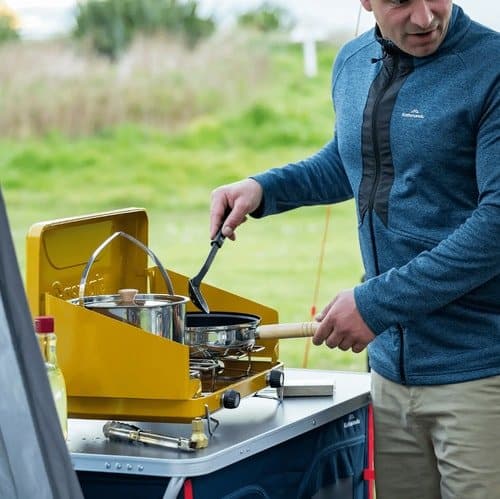Brand photos are an essential part of your visual brand identity. They are on your website, in your marketing materials, on your social media pages, practically anywhere you use photos to support your brand’s message, vision and mission.
The importance of choosing brand photos that build your business should never be underestimated. You’ve heard that a picture speaks a thousand words. I would argue that it might not stop there.
Why are pictures so important to your brand?
If you’ve ever encountered a photo that stayed with you—sort of seared itself into your memory—you can appreciate the power of a great image. What you may not have realised is that along with that picture came the memory of the brand that published it.
You see, when businesses create (or choose) photos that closely align with their brand’s values, and when that connection is easy to see, then that photo becomes one the loudest unspoken messages imaginable.
It’s powerful. It’s clear. And it’s difficult to forget.
When businesses create (or choose) photos that closely align with their brand’s values, and when that connection is easy to see, then that photo becomes one the loudest unspoken messages imaginable.
You can choose the perfect photo to promote your brand. You can also choose the worst possible photo for your brand, without even knowing it. But with a bit of knowledge about the unspoken messages that photos send, you can make better decisions…and get better results.
With a bit of knowledge about the unspoken messages that photos send, you can make better decisions…and get better results. Click To TweetDon’t underestimate the value of your brand photos
Did you know that around 65% of the human population are visual learners? People gather information and remember what they learn from what they see, even more than from what they hear or experience for themselves.
Did you know that around 65% of the human population are visual learners? Click To TweetWhat does that mean for you…a business owner striving to keep the attention of the people who are key to your success?
It means that you cannot underestimate the value of your brand photos. There are so many considerations, and even the most subtle elements can change the message you’re sending, along with how well that message will be received, absorbed and recalled.
Those subtleties are what I’m talking about today. Not everyone knows about (or will grasp) the crucial nature of brand photos (and what’s in them)—and that includes your competitors. So this is yet another chance to get ahead.
The most subtle elements can change the message you’re sending, along with how well that message will be received, absorbed and recalled.
A How-To Guide to Choosing Brand Photos that Build Your Business
There are lots of places you’ll use photos for your business—brochures, advertisements, your website, social media posts and profiles, and maybe even business card. Each photo will have a specific job to do, message to send or value to demonstrate.
So the first thing I want to impress upon you is to never take the selection of a photo for your brand lightly. That photo means more than any word or phrase could. In many ways, it’s more impactful than a video, because no one has to touch PLAY in order to absorb what it’s communicating.
Never take the selection of a photo for your brand lightly, because that photo means more than any word or phrase could. Click To TweetSo, without further ado, let’s take a look at the things to keep in mind when taking and selecting your brand photos.
Stock Photography
I would NOT recommend using stock photography. Your photos should be branded, and uniquely representative of your brand’s values. When your target market views an image you’ve published, they should be able to associate that image with your business. Stock photography increases the chances that they’ll see it on another brand’s website…and that just muddies the waters.
When your target market views an image you’ve published, they should be able to associate that image with your business.
Not to mention, stock photography has not been created with your brand in mind. As we move through this guide and you start to see how many considerations should be made when creating and choosing photos, I think you’ll see that a photograph shot without your brand in mind can’t possibly be expected to do the job.
The Photographer
If you’re just starting out in business, I can understand the temptation to shoot your personal brand photos yourself…with a cell phone or amateur equipment. Please resist this urge. The quality of the equipment used to shoot your photos will make a significant difference in the quality of the product.
The ideal photographer will be one who’s willing to learn about your business and come up with a strategy for using lighting, poses and other effects to communicate your intended message. A photographer who’s experienced in branding and marketing concepts is best.
The ideal photographer will be one who’s willing to learn about your business and come up with a strategy for using lighting, poses and other effects to communicate your intended message. Click To TweetWhoever shoots your brand photos, always ask to see examples of previous work. Pay special attention to the feelings you get from looking at those photos, and then take a look at the business they represent—do your impressions align with the brand’s purpose? Would you guess that those images were intended to embody that brand? Would you have chosen the same photos?
These are all good questions to ask as you search for the perfect photographer for your brand photos.
The ideal photographer will be one who’s willing to learn about your business and come up with a strategy for using lighting, poses and other effects to communicate your intended message.
Lighting
If you’re not a professional photographer, it can be easy to underestimate the significance of lighting. The right lighting can highlight the main points in a photograph, set a mood, tell a story…and help the viewer to understand that story. It really is that powerful!
There are a number of types of lighting sources and lighting styles. If your brand is sharp, clean, sophisticated and vivid then lighting that draws attention to contrast is best. If your brand is mysterious, soft and gentle then lighting that creates subtle lines will support your message.
The right lighting can highlight the main points in a photograph, set a mood, tell a story…and help the viewer to understand that story.
Outdoor lighting is always optimal—unless the message you’re sending has nothing to do with being outdoors. You wouldn’t photograph a toaster outside, because it’s not used there. I think you get the point.
These are just a few examples, and it’s important that you and the photographer you’re using take the time to experiment with different types of lighting. Stop and ask yourself how that lighting makes you feel, and if it’s supportive of the message you’re intending to send.
Composition
Do you want an intimate, close-up shot? Because your brand is about getting personal? Or do you want a wide-angle piece of scenery that sets a tone for adventure? How about a person in mid-range in front of a background that tells a story, to draw the viewer into the experience your brand is offering?
I can’t even begin to list all the possibilities offered by composition in brand photos. I suggest you make a list of things you want to accomplish and then share that list with your photographer. Brainstorm. Talk about it.
Tell the photographer about your ideal customer, what he or she wants, and what kinds of impressions they gather from the world around them. Take your photographer into the guts of your brand, so he or she can really see not only what your goals are, but how to view your business (and the world) through the eyes of your target market.
Take your photographer into the guts of your brand, so he or she can really see not only what your goals are, but how to view your business (and the world) through the eyes of your target market.
Depth of field is an essential element to keep in mind when considering the composition of your photos. Generally speaking, it refers to the distance between the closest and the furthest object, creating a focused image.

Should the focus be on a panoramic view? Or should the focus be on something (or someone) in the foreground, with the background blurred out, for example? It all depends on what you want your photo’s viewers to focus on.
That’s pretty easy to remember: Whatever you want them to focus on, make sure the photographer focusses on that, too. The parts of the image that aren’t in focus are not inconsequential; they tell a story also—it just depends on who or what you want the main character to be.
Product Photography
If you’re selling products and you’re using photos of those products online or in brochures, it’s important that you think about how you’ll present them. In an eCommerce setting, for instance, it’s always a good idea to show the product without distractions (on a pure white background with no shadow, for instance).

Or, if your audience is all about demonstration, maybe that photo should be of someone using the product. That’s where an in-context or lifestyle photo might serve your brand. In many cases, both types are appropriate.

In an eCommerce setting, it’s always a good idea to show the product without distractions.
No matter how you choose to present the product, it must be the focal point. And generally speaking, the fewer distractions the better (one exception might be if you want to show someone using the product who closely resembles your ideal customer).
The absolute worst thing you could do when publishing a product image is using another brand’s photo of something similar to the product you’re selling. Or, to include no image at all.

Images bring products to life. They make those products real for shoppers. Many times, those images are the only decision-making factors available to your target market, and so they’ve got to be high-quality and highly representative of the product itself.
The absolute worst thing you could do when publishing a product image is use another brand’s photo of something similar to the product you’re selling. Click To TweetKey Players in Photographs
Some businesses want photographs of key players in their businesses, for the About Us or Bio pages. Studio headshots are one way to go…and all should be of consistent quality. Or, if you want a more branded look, photographs of these key players doing what their bio says they do best can provide valuable insight for viewers.

Just remember that body posture and facial expressions are crucial to the messages you wish to send. An accountant probably shouldn’t be giving duck lips, and a children’s party entertainer should not have a ponderous look on her face. Work to convey the traits necessary for doing the job in that photo.
When it comes to key players in photographs, body posture and facial expressions are crucial to the messages you wish to send.
Other Photographs Containing People
I’ve got to touch on body language, and what it says in photographs.
I could make a big list and explain what every posture and gesture means. But what’s most important to know is that the human psyche—especially that of women—can draw all types of conclusions just by looking at a photo of another human.
The brain analyses how that person is sitting or standing, their eyes, their feet, and so much more…and often, we’re not even aware of our own analyses. We just “get a feeling”. That feeling is never wrong, and the people who see your photos will trust that feeling. So make sure it’s the one you want them to have.
For example:
- Dilated pupils = intense interest or stimulation (or inebriation).
- Crossed arms (over torso or chest) = insecurity or self-protection.
- Open torso with relaxed arms = comfort and openness.
- Crossed legs = self-protection (but note that the direction in which the top leg is pointing is the object of the person’s interest or focus).
- Legs crossed in a “T” (or one ankle on the other knee) = confidence or superiority.
- Legs spread = dominance.
- Direction feet are pointing = the direction the person wants to move (for instance, if their feet are pointed toward the door, they want to leave).
- Thumb up (in handshake or gesture, for instance) = dominance or confidence.
- Smile without engagement of the face = FAKE.
- Smile in which cheeks rise and eyes close slightly = genuine smile.
- Head tilt = listening and interest.
- Tightly clenched lips = discomfort, insecurity or disapproval.
- Shrug = submission or surrender.
- Hands with palms up = offering peace or showing surrender (can be translated to “I don’t have a weapon”).
These are just a few examples of body language, and how it can convey messages in real life and in photos.
The human psyche — especially that of women — can draw all types of conclusions just by looking at a photo of another human.
Those Who Have Mastered Brand Photography
In the wise words of Marian Wright Edelman, “You can’t be what you can’t see.” It’s important to reflect on examples and learn from others, whether that be successes or failures.
Just think about it… have you ever seen a brand photo that you felt didn’t align with the brand’s values? If you’re struggling to remember one, that could be because the photo didn’t connect with you, so you don’t remember it. But, more importantly, you don’t remember the brand.
You see what I’m getting at? It’s important that you don’t make the same mistakes because you want people to remember your brand, for the right reasons. As such, the team and I handpicked a few businesses that we feel have mastered the art of brand photography. Check them out below!
#1 Lush Cosmetics
#2 UNBIRTHDAY
#3 est living
What next?
With these guidelines, you can get started right away with creating and publishing brand photos that represent your brand alone.
Don’t be afraid to get creative; to challenge the status quo. These photos have to make an immediate and significant impact on those whom you want to attract to your brand —and they’ve got to have that special something that makes them unforgettable, too.
It sounds like a lot, I know, but remember this: NO ONE knows your ideal customer like you do.
- You have spent countless hours with them, just talking about what’s important to them.
- You have studied their habits.
- You know their likes and dislikes.
- You have felt their pain and you know just what they need to relieve that pain.
Now use all that knowledge and slip into their shoes. Create brand photos that hit a nerve, and that show them how you genuinely “get it.” Take the time to do this right, and your brand photos will be starting the conversion process for you in no time!
_________
Make sure you share any questions, experience, and advice in the comments below… whatever you may want to talk about regarding brand photos.

Marnie LeFevre is the Founder of Fempire. She is also a #1 bestselling author and marketing expert who has made it her mission to support women to achieve the success they deserve and to lead with confidence. She believes women can achieve anything with the right support and a sisterhood to back them up.





0 Comments